Moderately strong M4.4 solar flare erupts, CME produced
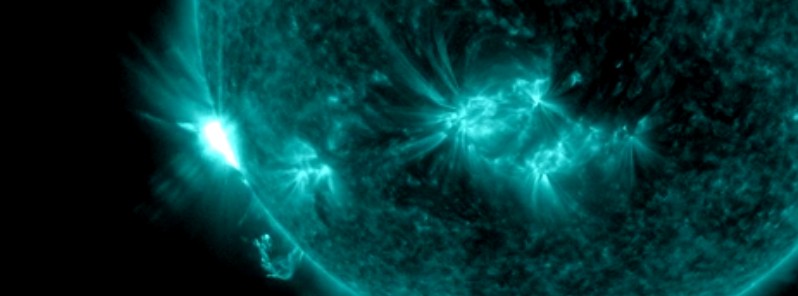
A moderately strong solar flare measuring M4.4 at its peak erupted at 13:11 UTC on November 29, 2020, from a region about to rotate into Earth view. The event started at 12:34 and ended at 13:41 UTC. This is the strongest solar flare in more than 3 years.
A Type II Radio Emission with an estimated velocity of 765 km/s was associated with the event, indicating a coronal mass ejection (CME) was associated with the flare event.
Additionally, a 10cm Radio Burst with a peak flux of 240 sfu lasting 34 minutes was also associated with the event.
A 10cm radio burst indicates that the electromagnetic burst associated with a solar flare at the 10cm wavelength was double or greater than the initial 10cm radio background. This can be indicative of significant radio noise in association with a solar flare. This noise is generally short-lived but can cause interference for sensitive receivers including radar, GPS, and satellite communications.
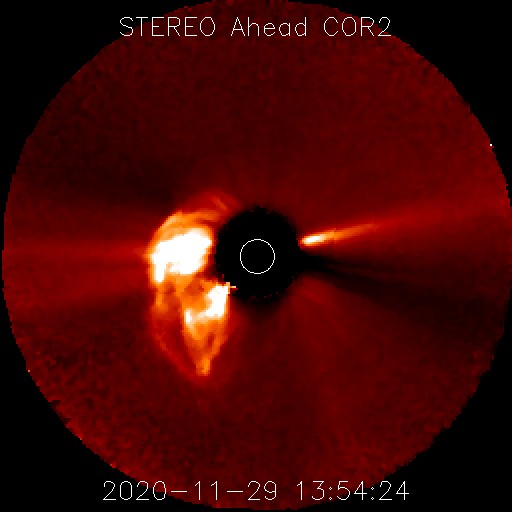
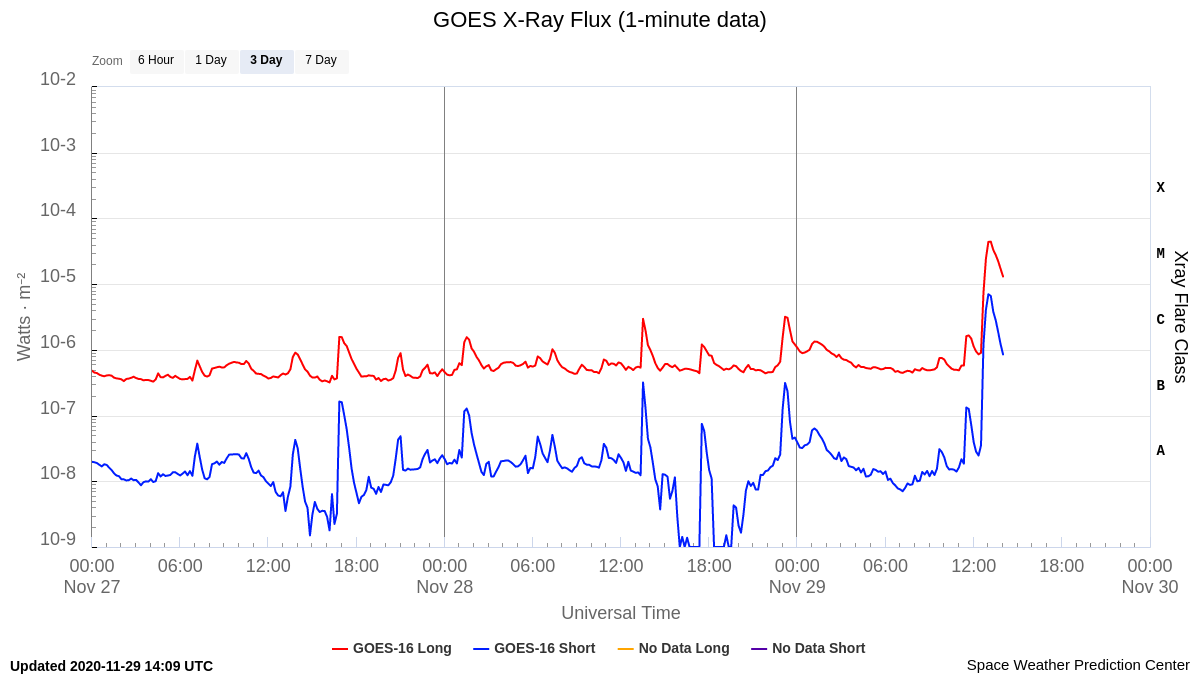

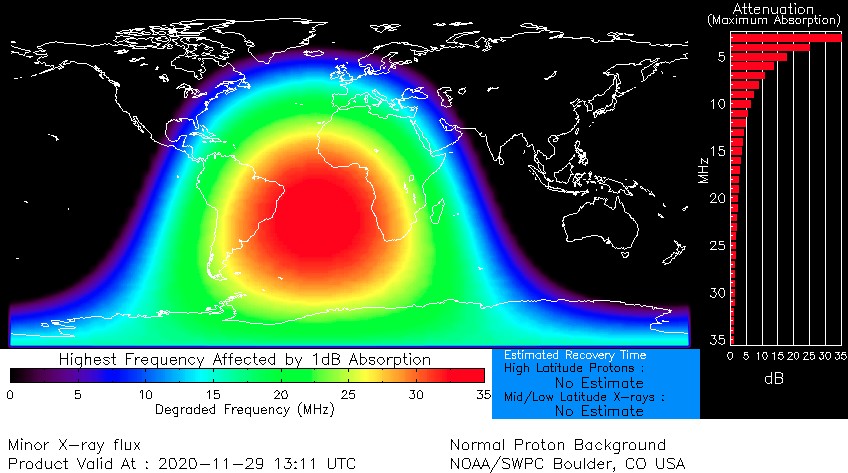

The location of the responsible region does not favor Earth-directed CMEs.
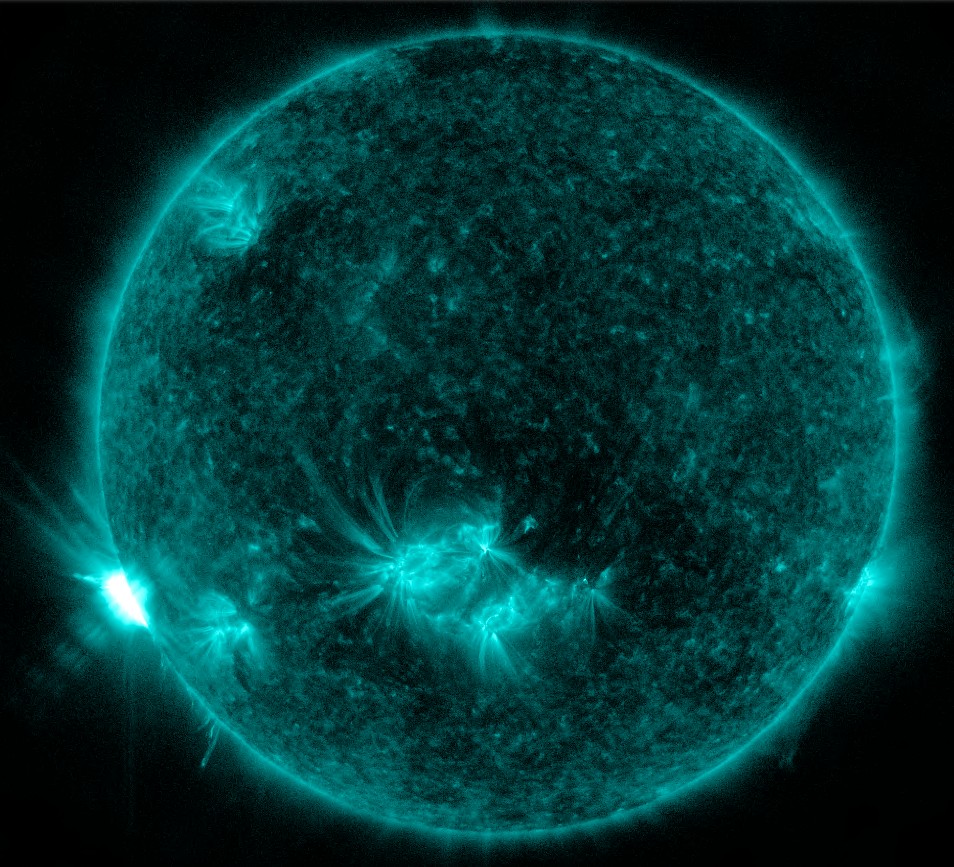

M4.4 solar flare at 13:11 UTC on November 29, 2020. Credit: NASA/SDO AIA 131, TW
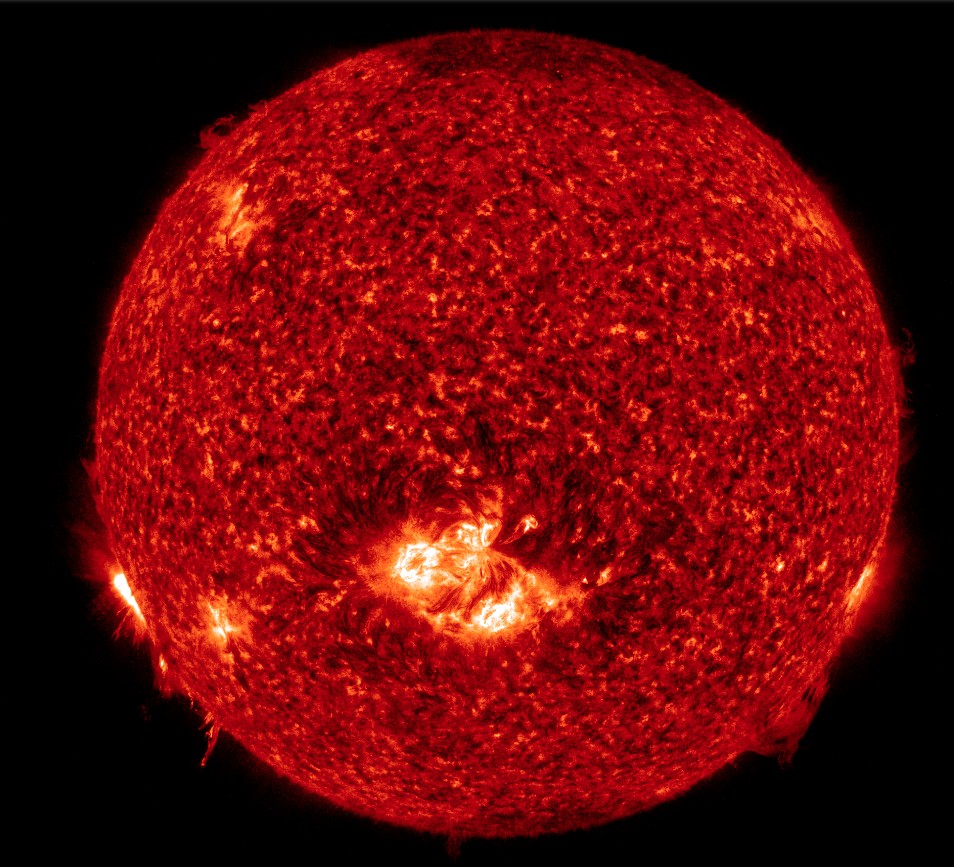

M4.4 solar flare at 13:11 UTC on November 29, 2020. Credit: NASA/SDO AIA 304, TW
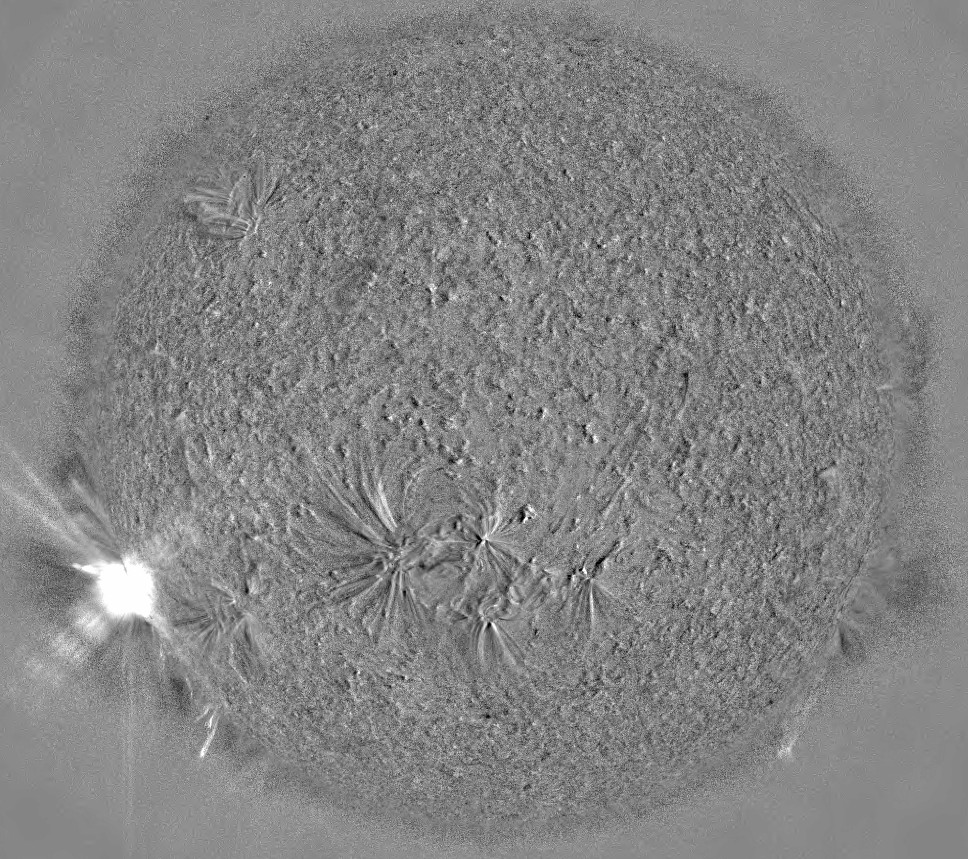

M4.4 solar flare at 13:11 UTC on November 29, 2020. Credit: NASA/SDO, TW
Solar activity was low in 24 hours to 12:30 UTC on November 29.
Region 2786 (beta-gamma) produced multiple C-class flares, including a C3.1 at 23:18 UTC on November 29. The region also produced an LDE C1 x-ray event observed at 01:16 UTC today. Slight growth was observed in the intermediate area of the region.
New Region 2788 (S26W00, Cro/beta) was numbered this period. This new region had formally been the trailer portion of Region 2785 (Hsx/alpha).
The evolving magnetic structure of the sunspot complex comprised of Regions 2785 and 2788 supports these as separate sunspot groups. The remainder of the spotted regions were stable and quiet.
Featured image: M4.4 solar flare on November 29, 2020. Credit: NASA/SDO AIA 131

Has anyone warned the Vendee Globe race fleet?